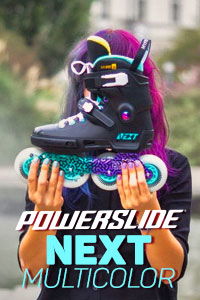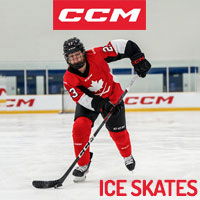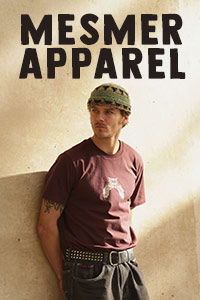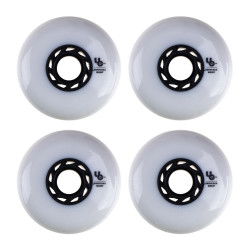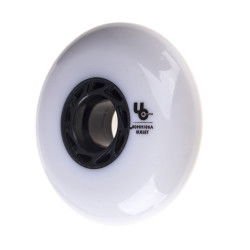Wheels
680 itemsWheels are what makes inline skates go. That’s a simple, basic truth but it doesn’t even scratch the surface. Not all wheels are created equally.
At the most basic level, all wheels share the same construction template (with the exception being pumped off road wheels): a composite or aluminium core covered in urethane “tire”. Good quality skates do not use plastic wheels! The urethane is the best material for skating wheel and this is applicable not only to inline skating, but also to rollerskating, skateboarding and scooters.
In some wheels, there is a softer urethane strip placed inside the harder, outer layer. It gives the wheel better rebound. What is rebound, then?
The higher rebound means that less impact energy is absorbed and more returned, making the wheel energy transfer more efficient. This results in faster skating. If we take such wheel and try to bounce it off the surface, the higher it goes the better rebound it has. This parameter is directly tied to urethane compound quality. Mid-tier to top shelf wheels use SHR (super high rebound) compounds, while cheaper ones use HR (high rebound) which still have acceptable properties but is slower overall.
The urethane quality also translates to how the wheel wears down during use and how quickly it happens. Even cheaper skates from good brands come with pretty okay wheels in terms of wear, lasting long and it is rare to see pieces of urethane chipping off or “tire” cracking. Of course, as a rule of thumb, the higher quality (and in turn, more expensive) the wheel is, the longer it lasts – top of the range wheels can last years if they are used by casual skaters. The price also defines how thick urethane layer is on the core – better wheels have smaller cores in given size and more urethane.
Cores themselves are adjusted to characteristics of given skating style and forces they need to endure. For example, 110 mm diameter freeskating wheels have stronger cores than speedskating wheels of the same size, as they need to withstand impacts on jumps and lateral forces during slides. On a downside, more solid cores are heavier. Some companies try to get around this by using super lightweight and durable aluminium cores. This technology is not cheap, though.
The wheel hardness play a big role, too. Harder wheels usually wear slower (if we talk about the same urethane quality levels) than softer ones and let you go faster, thanks to less contact surface with the ground and roll resistance. They are also easier to slide on. The mos common hardness found in skates is 84A-85A. Recreational and kids’ skates wheels have lower hardness index most of the time, whereas ones used in aggressive skating – higher.
Last two factors to take in to account when choosing a wheel model is size and profile. Wheels made for aggressive skating usually come at maximum size of 60 mm and have wide, stable profile to maximize contact surface with the ground. However, there are narrower profile wheels for this style of skating, too, giving a bit more speed. Rec and fitness wheels are in size range from 72 mm up to 110 mm and have elliptical profile, which is the fastest one as it have least rolling resistance. Speedskating wheels are of 100 mm to 125 mm diameter and have elliptical profile too. Most common wheel size found in freeskates is 80 mm, but these skates may come with almost all sizes depending on the application – from 72 mm to 125 mm. The pressure is put on speed and precision, so elliptical profile is also the most common one, but there are wider models too, giving more grip and stability.
Of course, wheel size you can use in your skates depends on the frame. You cannot bend the laws of physics and fit a set of 90 mm wheels in to a short frame which takes only up to 4x80 mm ones.



